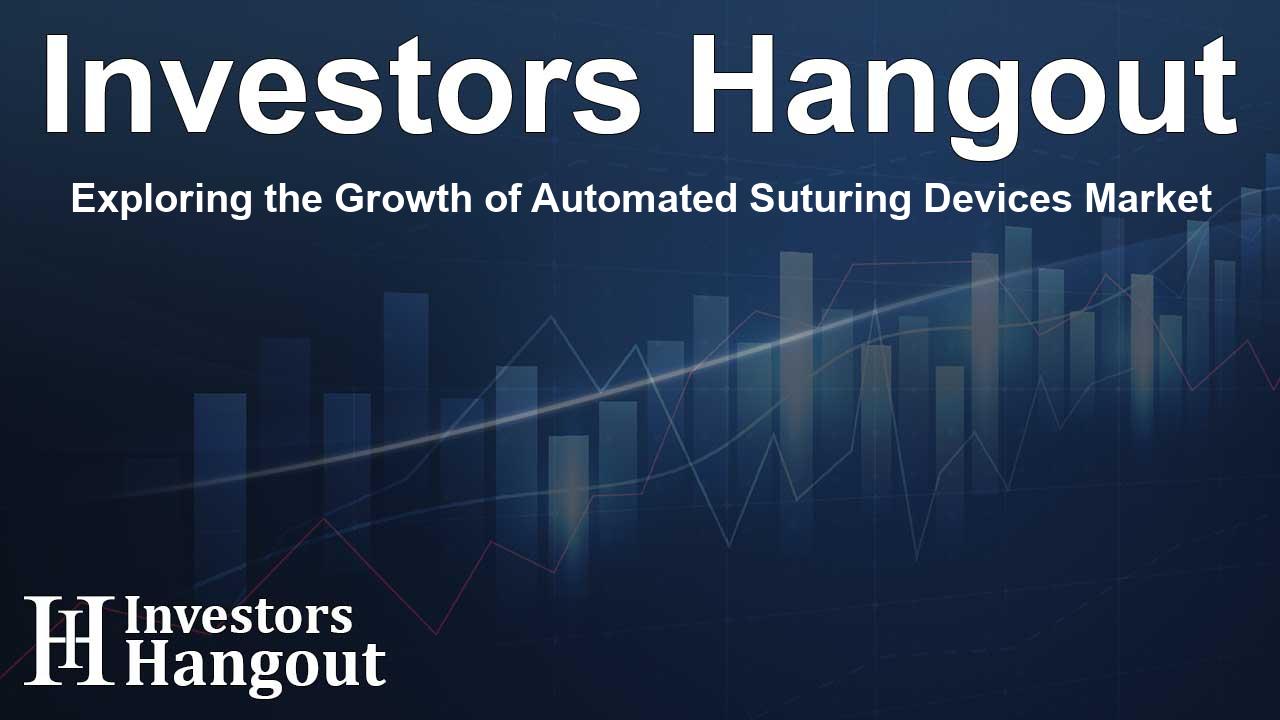Exploring the Growth of Automated Suturing Devices Market

Unlocking the Future: Automated Suturing Devices Market Growth
The automated suturing devices market is on an upward trajectory, poised to expand significantly driven by technological advancements and an increase in surgical procedures. With estimates suggesting a growth of USD 244.8 million from 2025 to 2029, it is evident that this market is evolving rapidly. Such devices are critical in streamlining surgical processes and enhancing patient outcomes, which is vital for healthcare facilities focused on efficiency and quality care.
Current Market Overview
This growing market is expected to flourish at a compound annual growth rate (CAGR) of 6.4% during this forecast period. The proliferation of surgical centers specializing in various procedures is largely responsible for the heightened demand for automated suturing devices. As healthcare providers aim for improved operational efficiencies, these devices are emerging as essential tools. Factors like advancements in robotic technology and infection-resistant features are further influencing this growth.
Key Players in the Industry
Numerous companies are making strides in this sector, including Apollo Endosurgery Inc., B.Braun SE, Becton Dickinson and Co., and Medtronic Plc. Each of these companies is innovating and developing new products that cater to specific surgical needs, which underscores the market's concentrated structure.
Drivers of Market Expansion
The rise in minimally invasive surgical techniques is one of the principal drivers of market growth. Procedures such as laparoscopy and arthroscopy are increasingly using automated suturing devices, which allow for faster recovery times and decreased hospital stays. Additional market drivers include the aging population and the prevalence of chronic diseases, which necessitate efficient surgical solutions. Automated suturing devices not only enhance the quality of surgical outcomes, but they also reduce the strain on healthcare facilities regarding recovery and infection control.
Challenges Faced by the Market
Despite its vast potential, the market for automated suturing devices faces a few challenges. A significant barrier is the high initial cost of these devices compared to traditional suturing methods. While the cost may be justified over time due to reduced complications and shorter hospital stays, upfront expenses can deter some healthcare providers from making the investment.
Barriers to Adoption
Reimbursement policies in various regions also hinder the adoption of these devices, particularly in developing nations where there may be less financial support for advanced medical technology. Additionally, ensuring consistent product availability and navigating complex regulatory requirements are challenges that manufacturers continue to face.
Segment Analysis
This report categorizes the automated suturing devices market into segments based on product type and geography. The product types can be broadly classified into reusable and disposable devices. Reusable devices, although initially more expensive, provide a long-term cost-saving option for hospitals due to their durability and reusability. On the geographical front, key markets include North America, Europe, and Asia, each showing unique growth potential.
Looking Ahead: Innovations and Future Trends
Innovations in the automated suturing devices market are poised to further reshape surgical practices. Newer models are being designed with enhanced ergonomic features and smart technologies that allow for better precision and operational control during surgeries. The integration of artificial intelligence in these devices can revolutionize how surgeries are performed, potentially leading to safer and more effective procedures.
Frequently Asked Questions
What is driving the growth of the automated suturing devices market?
The significant growth is primarily driven by an increase in surgical procedures and advancements in technology to improve efficiency and patient outcomes.
Who are the major players in the automated suturing devices market?
Key players include Apollo Endosurgery Inc., B.Braun SE, and Medtronic Plc, who are spearheading innovations in this field.
What challenges does the market face?
High costs of devices and insurance reimbursement policies act as barriers to wider adoption.
What are the future trends in automated suturing devices?
Continuing innovations, particularly the integration of AI and smart technologies, are expected to lead to more accurate and effective surgical processes.
How can hospitals benefit from automated suturing devices?
These devices offer reduced surgical times and complications while improving patient throughput, ultimately leading to lower operational costs in healthcare facilities.
About The Author
Contact Kelly Martin privately here. Or send an email with ATTN: Kelly Martin as the subject to contact@investorshangout.com.
About Investors Hangout
Investors Hangout is a leading online stock forum for financial discussion and learning, offering a wide range of free tools and resources. It draws in traders of all levels, who exchange market knowledge, investigate trading tactics, and keep an eye on industry developments in real time. Featuring financial articles, stock message boards, quotes, charts, company profiles, and live news updates. Through cooperative learning and a wealth of informational resources, it helps users from novices creating their first portfolios to experts honing their techniques. Join Investors Hangout today: https://investorshangout.com/
The content of this article is based on factual, publicly available information and does not represent legal, financial, or investment advice. Investors Hangout does not offer financial advice, and the author is not a licensed financial advisor. Consult a qualified advisor before making any financial or investment decisions based on this article. This article should not be considered advice to purchase, sell, or hold any securities or other investments. If any of the material provided here is inaccurate, please contact us for corrections.
